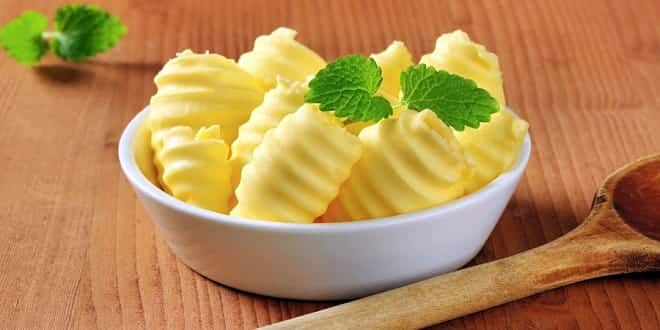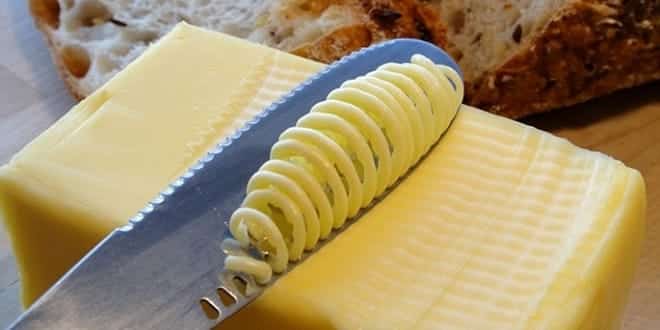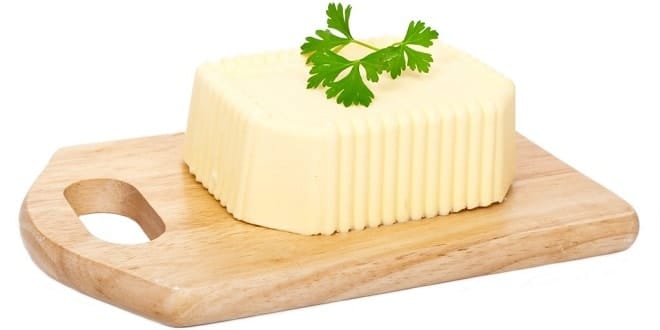Optimizing Butter Making ( Laura Kelley and Mohammad Biswas )
•Optimizing Butter Making
•Laura Kelley and Mohammad Biswas
•CHEN 3820 Chemical Engineering Lab 1
•April 24, 2007
•Buttery Facts
•Butter is made by the agitation of the cream layer from unhomogenized milk.
•Butter has been made for many centuries in the same fashion, but technological advancements have lead to faster ways to make butter.
•Our project involves making butter by varying temperature and adding co-solvents.
•Background: How to Make Butter
•Milk: Basis of Butter
–Milk is an emulsion of fat globules within a water based fluid
–Milk consists mostly of water
–Fat separates from the milk to form cream layer
–This layer is more concentrated in fat than the milk
•Background: How to Make Butter
•Churning: Means to Butter
–Early period butter making process
–Collect the cream layer from the milk
–Allowed to sour over a couple of days at room temperature
–Use Butter Churn to produce butter and buttermilk
–Remove butter from buttermilk and rinse with cold water
–Add salt to butter for preservation
•How We Made Butter
•Main Ingredient:
–Heavy Whipping Cream
•Methods Used:
–Electric Mixer
–Manual Shaking
•Agitation causes physical separation of butter and buttermilk
•Stages of Butter Churning
•Heavy Cream Layer
–This was obtained after separation of the milk emulsion
–Agitation begins at this stage
•Whip Cream
–Stiff peaks form
–This is what is purchased at stores after adding other ingredients
•Stages of Butter Churning
•Transition Stage
–Butter begins to form
–Appearance of the signature pale yellow color
•Final Stage: Butter
–Formation of clumps
–Separation of butter and buttermilk
–Wash butter to remove excess buttermilk for storage
•Experiment 1: Different Ingredients
•Main Ingredient:
–Heavy Whipping Cream
•Co-solvents Examined:
–Salt
–Calcium Supplements (Calcium Sulfate)
–Baking Powder
–Cornstarch
–Sugar
•Results of Experiment 1
•Experiment 2: Addition of Salt
•Amount of Salt for every two cups (~ 460 g) of heavy cream:
–½ teaspoon (2.4 grams)
–1 teaspoon (4.7 grams)
–1 tablespoon (14.2 grams)
–2 tablespoons (28.5 grams)
–3 tablespoons (42.7 grams)
•Results of Experiment 2
•Experiment 3: Temperature
•Temperature Variation:
–0oC
–10oC
–Room Temperature
–30oC
•Determine the role of temperature on the formation of butter
•Results of Experiment 3
•Conclusions
•Butter can be produced the fastest with an ionic co-solvents
•Increasing the amount of co-solvent does not always decrease the time to make butter
•Ideal conditions to make butter is at room temperature
•Questions?
References
–Cooking for Engineers, http://www.cookingforengineers.com, April 2, 2007
–Milk, http://en.wikipedia.org/wiki/Milk, April 22, 2007
…





Butter “Stick Type” neden Türkiye’de yok ?